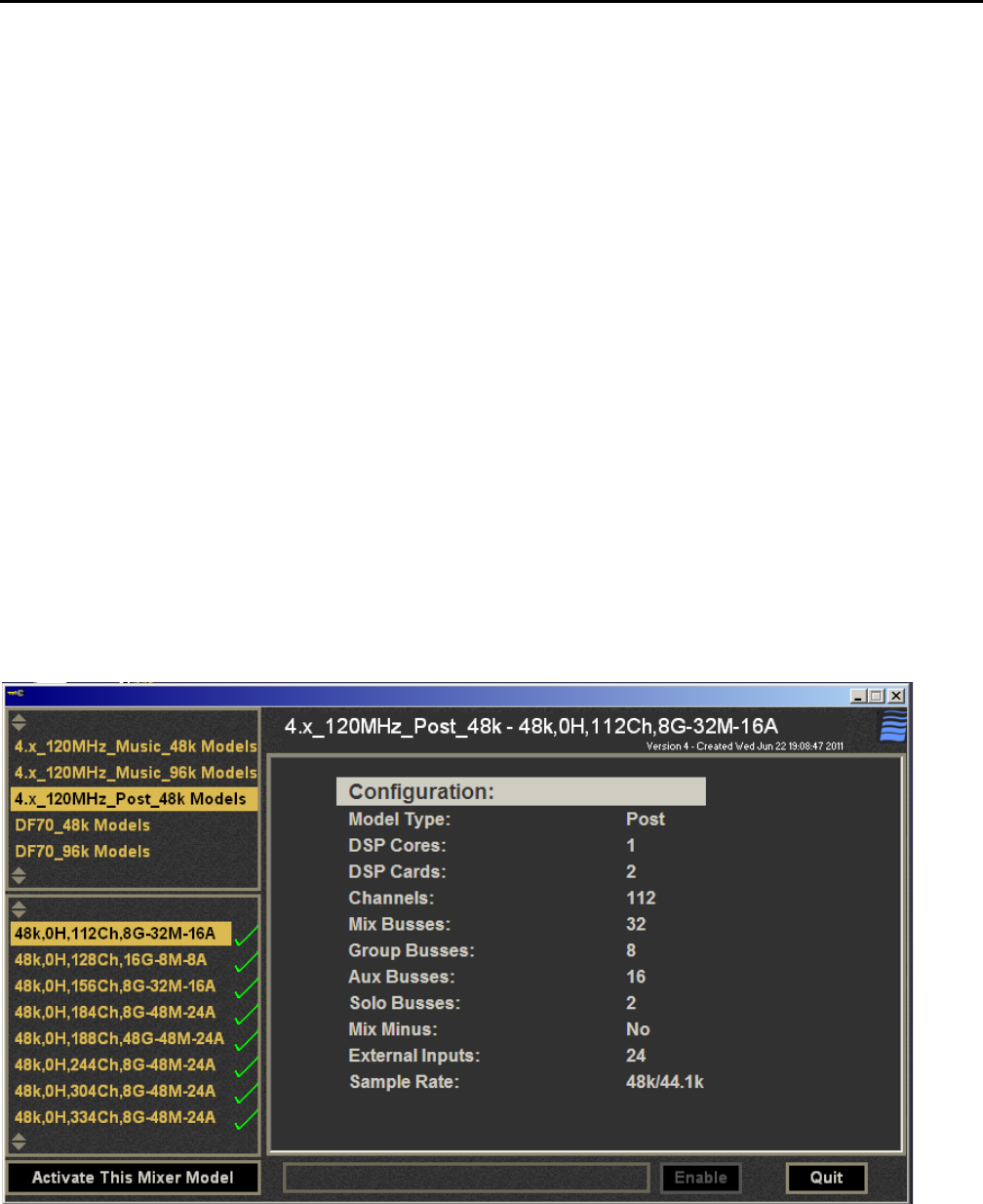User guide
Table Of Contents
- Contents
- Introduction to System 5
- Master Facilities and Channel Strip
- Control, Layouts and Snapshots, and Linking
- Chapter 8: Machine Control (S5P Only)
- Chapter 9: Control Groups and Multi Format Masters
- Chapter 10: Layouts and Snapshots
- Chapter 11: Linking (S5P Only)
- Chapter 12: Dynamic Automation (S5P Only)
- Chapter 13: GPI/O Event System
- Chapter 14: CM403 Film/Post Module (S5 Only)
- Chapter 15: Hybrid Pilot and System 5 Fusion Options
- Appendix A: Compliance Information

System 5 Digital Audio Mixing System User Guide28
System
System 5 can be customized for each application. The number of channels, busses, and external inputs available depends on the
Mixer Model and amount of processing in the DF66 (or DF70 Super Core, if used instead).
Given a number of processing cards, several different Mixer Models can be configured, each with different numbers of channels,
mix and group busses, and aux sends. Mixer models are enabled in MM Pass, which is installed on the desktop with the eMix ap-
plication installer. A system can be quickly and easily changed to a different channel and bus configuration by selecting an ap-
propriate Mixer Model.
The DF66’s number of the DSP Line Cards determines the amount of processing available to the system, which can be expanded
up to six cards at any time. For the most powerful DSP, the DF70 has eight cards that yield 454 channels at 48 kHz, or 222 chan-
nels at 96 kHz.
Mixer Model
Choosing a Mixer Model
The Mixer Models that support 96 kHz are intended for music applications requiring the highest digital sound quality (i.e.,
sources are analog or 24-bit/96 kHz). For lower resolution sources (i.e., 16-bit/44.1 or 48 kHz), a Mixer Model with a 44.1/48kHz
sample rate is more suitable. For post-production and on-air broadcast, 48 kHz is a perfectly acceptable sample rate with adequate
audio quality and twice as many channels as 96 kHz.
When choosing a Mixer Model, carefully consider the combinations of channels, mix and group busses, and aux sends required. For
many applications (other than multiple-stem post mixing), the maximum number of mix busses used is six for a 5.1-channel Mix
Section. Be careful to select enough aux sends: they always seem to get used up!
Changing the Mixer Model
Mixer Models










